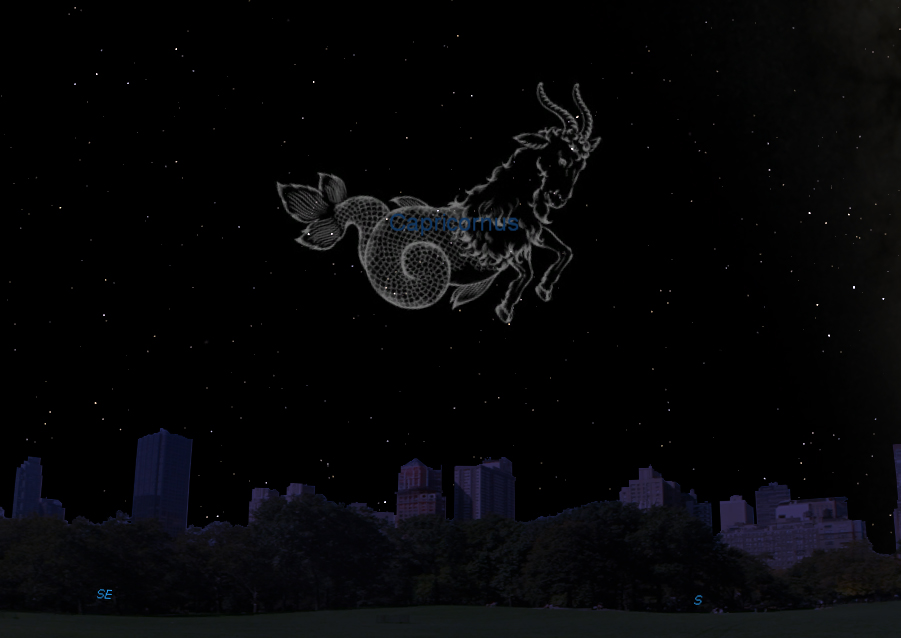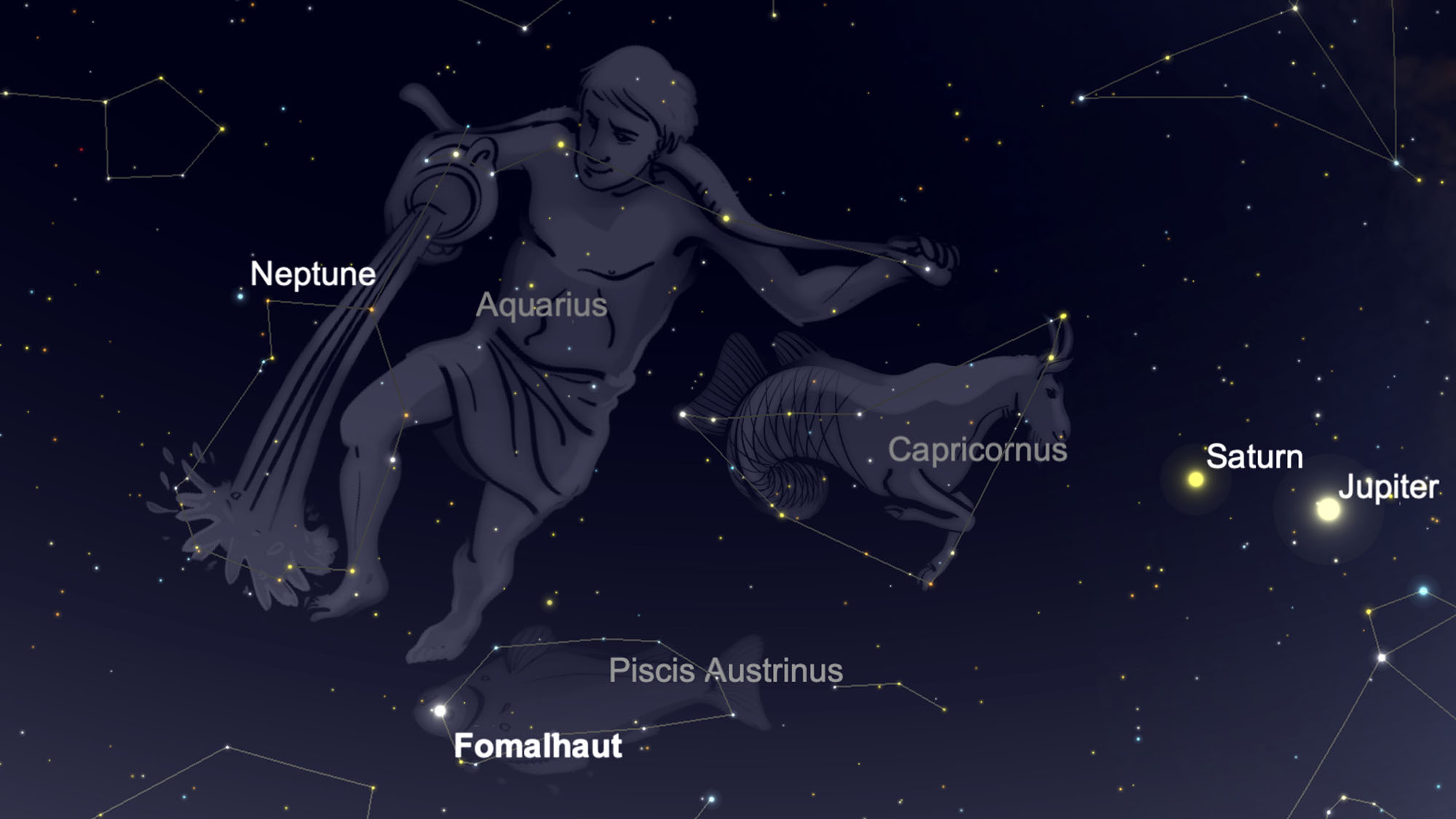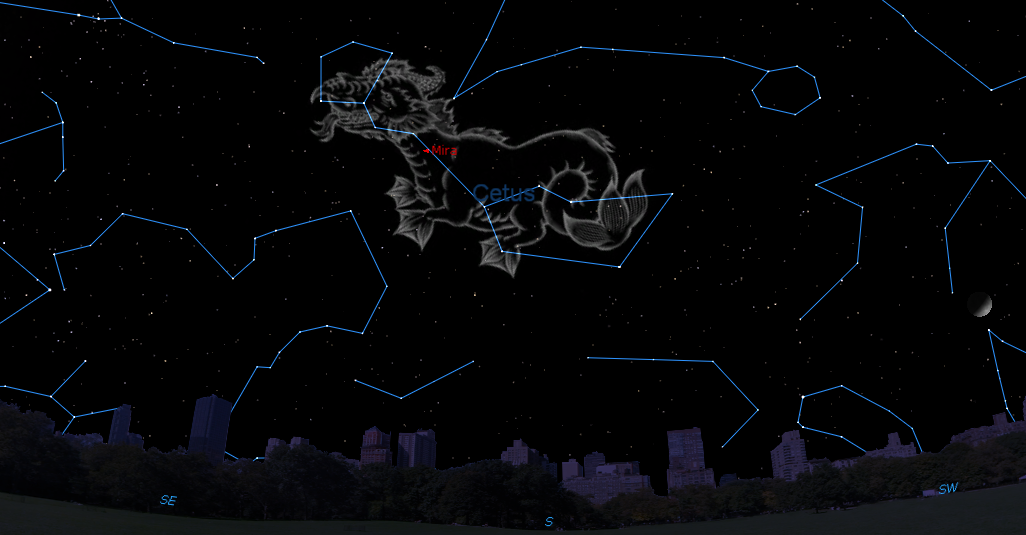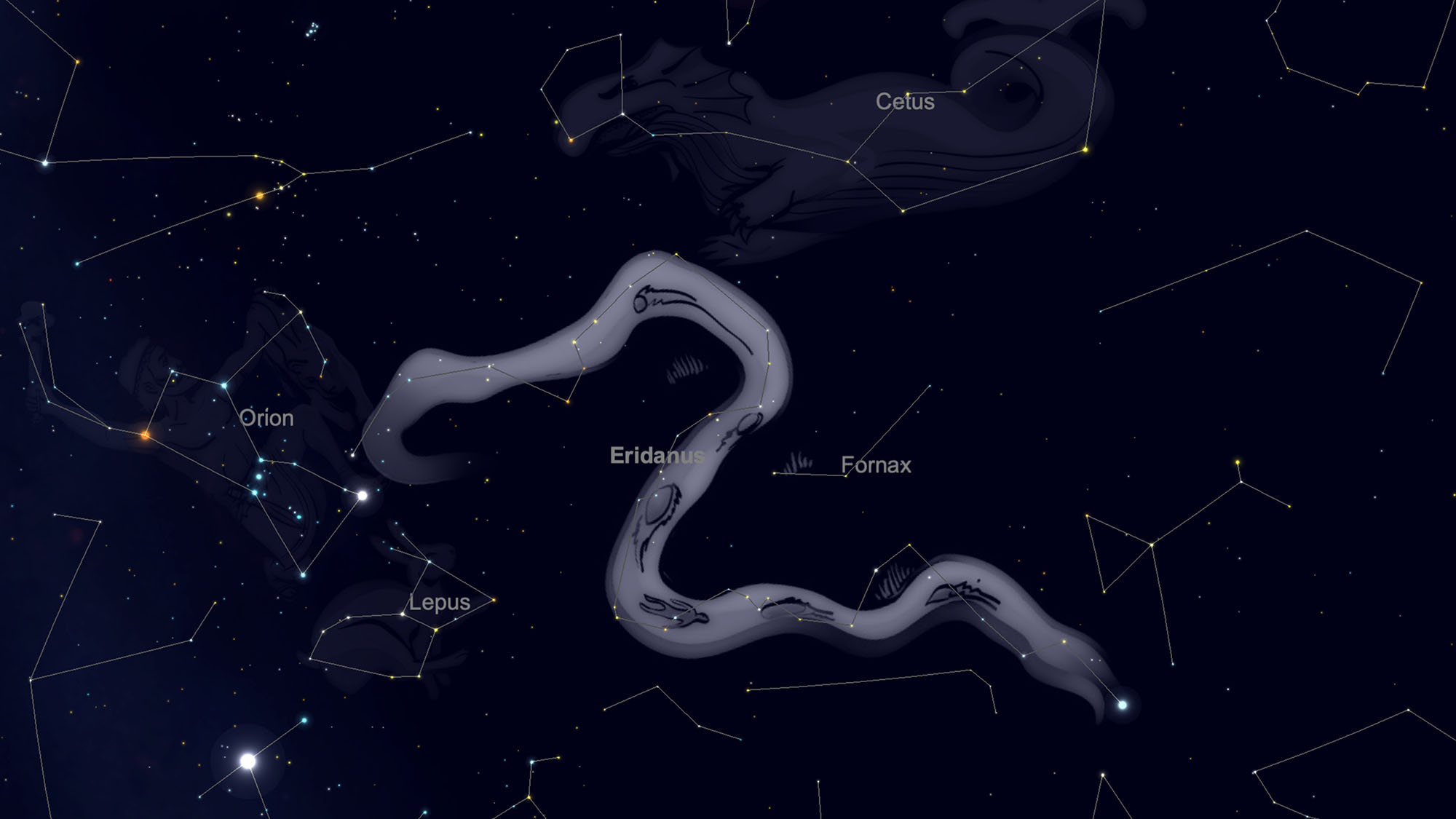Autumn's celestial sea: Catch these 'water' constellations in the night sky this fall
Autumn officially arrives in the Northern Hemisphere on Tuesday, Sept. 22 at 9:31 a.m. EDT (1331 GMT). And consequently, our evening sky is now one in transition.
Many of the striking star groups and rich Milky Way fields of a summer evening still remain with us in the western sky, while the brilliant star Capella ascending in the northeast is a promise of more luminaries to come.
Just think of this: two months from now, the constellation of Orion, the hunter and his retinue will be dominating our evening skies; forerunners of the oncoming winter season.That of course leaves us to talk about the stars of fall, but before we get into that, some lingering thoughts about our current evening skies.
Related: Why the night sky changes with the seasons
Smoky skies
In the northern United States, football weather usually brings many clear, dry nights with far better observing conditions than are typically of summer. In this seemingly dysfunctional year of 2020, however, we've had to cope nationwide with airborne smoke from the wildfires in the western states. Even in the Northeastern States and New England, high altitude smoke on some nights has squelched all but the brightest stars and planets.
We can only hope that in the coming days, that this widespread smoke and haze layer (can we refer to it as "smaze"?) will gradually dissipate and allow for clearer and more transparent night skies. When that happens, why not explore with binoculars the splendid star fields within the famous asterism (or star pattern) known as the Summer Triangle? Sweep especially along the neck of the constellation of Cygnus, the swan, which is also the upright of the Northern Cross asterism. In fact, the brightest part of the Milky Way can be found from here, extending down through the constellation of Aquila, the eagle and down to the "Teapot" of Sagittarius, an asterism that marks the center of our Milky Way galaxy.
If you have never done this before, you may well share Galileo's awe when more than four centuries ago he turned his first crude telescope on the Milky Way.
Breaking space news, the latest updates on rocket launches, skywatching events and more!
Watery stars
In contrast to the bright and pretty star fields of the summer Milky Way now slowly departing the scene in the west and the array of bright stars of winter beginning to make themselves evident in the east, we have the stars of autumn largely predominating our sky across much of the south. We might refer to this region of the sky as the "celestial sea" because so many of the star patterns seem to have an association with water. From west-to-east, we have a sea goat (Capricornus), a water carrier (Aquarius), a pair of fishes tied by their tails to a fishing line or ribbon (Pisces), yet another fish placed far to the south (Piscis Austrinus), a whale (Cetus) and a winding river (Eridanus).
Indeed, it is a "watery region" of the sky.
British astronomer and author Guy Ottewell, in his book "To Know the Stars" (Astronomical Workshop, 1990), goes even further in this analogy: "It is watery in the sense that it is vague and dim, like a dark pool; they are all dim and hard to recognize."
Indeed, with the exception of the southern fish asterism, Piscis Austrinus, which contains one lone star of first magnitude, a preponderance of all of the stars in this region of the sky are of magnitudes 3, 4 and 5. Magnitude is a way that astronomers classify the brightness of sky objects, with the lower the figure of magnitude, the brighter the object. The brightest stars, for example, are either magnitude 0 or +1. If you live in a bright city or nearby suburb, your limiting magnitude might only be +3. Any star with a value higher than that might not be visible at all, hence giving the impression that the sky during the fall is practically devoid of bright stars.
One outstanding exception is glowing brilliantly with a yellow-orange light in the eastern sky soon after 10 p.m. in your local time. This interloper is shining among the dim stars of Pisces, the fishes at a negative magnitude of 2.3. This is the planet Mars, which is now making an exceptionally close approach to Earth. The Red Planet reaches perigee, or its closest point to Earth all year, on Oct. 6. We'll have more to say about this next week.
A contorted constellation
The ancients who had conceived the watery constellations must have had a very vivid imagination. Capricornus is an excellent example of this. A centaur is a half man and half horse, and a mermaid is a half woman and half fish. In Capricornus, now about halfway up in the southern sky at 9 p.m., we supposedly have a half goat and half fish, though its dim stars form a roughly triangular figure which might better suggest an inverted hat, or perhaps a sting-ray gliding toward you. At this moment in time, the western end of the sea goat is occupied by a bright yellow-white "star" which is really the planet Saturn. In late December, brighter Jupiter will shift east and will nearly merge with Saturn in what is being promoted as "The Great Conjunction," which will happen in Capricornus.
Several thousand years ago, the sun reached its southernmost position in the sky (the winter solstice — declination 23.5 degrees south) when it was passing through Capricornus. During this time, it was overhead at a southerly latitude we call the Tropic of Capricorn. It still carries this name although the sun, as a result of a long-term wobble of the Earth's axis, is now in Sagittarius at the time of the winter solstice.
The Water Man and his fish
I sometimes wonder how many who hear the popular song "Aquarius" (by The 5th Dimension) know what Aquarius really is. It is a zodiacal constellation which traditionally represents a man holding a water jar or urn (marked by an inverted "Y"-shaped asterism of four stars), which is spilling a vaguely marked stream of water southward into the mouth of Piscis Austrinus, the southern fish.
Here we find a somewhat isolated first-magnitude star, Fomalhaut. The name is really a corruption of the Arabic Fum al Hut, meaning the "mouth of the fish." As such, it might best be pronounced "Fo'mal-hawt." Because it seems to sit all by itself, low in the southern sky this week at around 11 p.m., Fomalhaut is the star often referred to as the "Lonely One."
Another pair of fish form the stretched-out zodiacal group known as Pisces; two fishes, each tied on the end of a ribbon or string, knotted together at the ends. The western fish has a circular shape called the Circlet and the eastern fish resembles a small, faint triangle. Perhaps we could call the western fish a flounder or fluke while the eastern fish might represent a trout or herring. As we noted, Mars is currently blazing in Pisces, calling attention to this rather faint star pattern.
A "wonderful" star!
Sprawling to the south and east of the fishes is Cetus. Some astronomy books refer to him as a whale, and indeed the name is derived from the Latin "Cetacea," meaning whale. Other reference sources refer to Cetus as a sea monster.
Some allegorical star atlases depict him as resembling a Godzilla-like creature with a fish tail. Cetus is best known for Mira, a special reddish star which is located not far southeast of where the ribbons of the fishes are knotted. Mira is the very first variable star to be discovered. On Aug. 13, 1596, the German astronomer David Fabricius caught sight of it where no star was charted before. It soon faded away and so it was thought that it was a nova, or exploding star, never to be seen again. And yet, when Johannes Bayer mapped the constellations in 1603, the star was visible once again and quite unaware of its "now you see it, now you don't" behavior, Bayer listed it in his famous atlas as Omicron Ceti.
Finally, during the winter of 1638, the Dutch observer Johannes Holwarda caught both the gradual brightening and subsequent fading of this star, almost like a leisurely celestial lighthouse. It seemed to grow brighter, then fainter, then brighter again over a roughly 330-day (11-month) cycle. It seemed to rise to its greatest brilliance twice as fast as it fades to below naked-eye visibility. The noted Polish astronomer Johannes Hevelius christened it Mira Stella, the "Wonderful Star" in 1662. At its faintest, Mira shines only as bright as a ninth magnitude star and is visible only with a small telescope.
At its brightest, Mira appears 250 times brighter, usually equal to a third-magnitude star, though on rare occasions it can get even brighter and in one year (1779) it became so bright that it nearly rivaled the first-magnitude star Aldebaran in the constellation of Taurus, the bull.
This week, Mira is forecast to be shining at its peak brightness, so why not check it out and see how bright it is shining? Cetus is well up in the southeast part of the sky in the hour before midnight and covers a large part of the southern sky by 2 to 3 a.m.
A meandering celestial stream
Lastly, there is the Heavenly River, Eridanus, a constellation that at this time of year does not begin emerging from beyond the southeast horizon until after midnight. It has been visualized as a river since ancient times — usually the Euphrates or the Nile.
It begins near the brilliant blue star Rigel in Orion and flows in a general southwest direction; a winding stream of dim stars whose meanderings may not be able to trace without the aid of a map. It ends in a blaze of glory with Achernar, a blue first-magnitude star glowing at the end of the river, but unfortunately, out of sight except when it grazes the southern horizon in the southernmost United States.
Too bad! You might say Achernar is "out of the mainstream," so to speak.
Joe Rao serves as an instructor and guest lecturer at New York's Hayden Planetarium. He writes about astronomy for Natural History magazine, the Farmers' Almanac and other publications. Follow us on Twitter @Spacedotcom and on Facebook.

Joe Rao is Space.com's skywatching columnist, as well as a veteran meteorologist and eclipse chaser who also serves as an instructor and guest lecturer at New York's Hayden Planetarium. He writes about astronomy for Natural History magazine, Sky & Telescope and other publications. Joe is an 8-time Emmy-nominated meteorologist who served the Putnam Valley region of New York for over 21 years. You can find him on Twitter and YouTube tracking lunar and solar eclipses, meteor showers and more. To find out Joe's latest project, visit him on Twitter.





